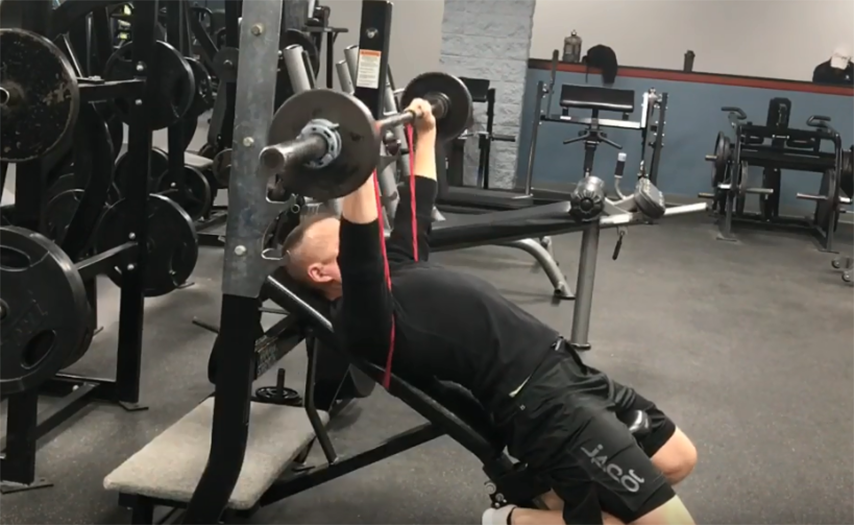For active aging adults, who love to workout with weights, contrast band training is the easiest and most joint friendly way to keep weight lifting a part of your weekly workout routine without beating up and aging your body.
Why Contrast Band Training?
- Less free weight resistance required
- Less load on your spine and peripheral joints
- Allows you to train in different movement patterns
- Allows you to apply resistance in different directions besides vertically
- Applies resistance through the entire range of motion
- Allows you to change up repetition speed
- Helps improve end range joint stability and injury prevention
- Makes lifting weights more portable due to less weight needed
“Stop Beating Up Your Body Lifting Weights Only … Contrast Band Train and Start Feeling, Moving and Looking Your BEST”
4 Ways to Program in Contrast Band Training
1. Alternating between band resistance and free weight resistance
The easiest way to contrast band train is by alternating between a band resistance exercise and a free weight resistance exercise that trains similar muscles or movements.
An example of this would be Kneeling DB Shoulder Press followed by Kneeling Band Press. This can be done several ways but my recommendation for the active aging adult is to do 3 to 4 sets of band presses followed by 3 to 4 sets of dumbbell presses.
Doing the band resisted exercise first activates the stabilizing muscle better and creates a safer warm-up effect. This makes it easier on the joints when free weight training is initiated.
Contrast Band Training – Shoulder Press Example
2. Combine free weight resistance with band resistance simultaneously (Dave’s Favorite Option)
To me this is one of the most effective ways to contrast band train. However, it may require more set up and a higher level of strength training skill. Typically the setup involves attaching bands to the actual free weight exercise.
For example, attaching bands to the barbell when doing squats or bench presses. However, it could also entail attaching the band resistance to the body and then performing the free weight resisted movement.
For example, using the crossover band setup with squatting. Regardless which approach is applied, the ability to work against both types of resistance simultaneously is the goal.
3. Do primary strength exercise with free weight resistance followed by auxiliary exercises with band resistance
The #1 goal behind contrast band training as an active aging adult is to stimulate the nervous system using different types of resistance. Therefore, simulating the same movements with band and free weights is not necessary.
Another effective way to contrast train is to perform the primary strength building movement with free weight resistance. Then apply band resistance while performing the auxiliary strength movements.
For example, body weight pull ups followed by a band high attached pulling circuit. The primary pulling muscles are stimulated by the free weight resistance and then stimulated in different planes of movement by band resistance.
4. Do a movement or muscle specific primer workout with band resistance and then a strength specific workout with free weight resistance
Band resistance is obviously more joint friendly than free weight resistance. This is why I will often contrast the two by performing a “primer workout” that is synergistic with the movement or muscles I plan to train that day.
A good example of this is my regular overhead pressing and pulling day that includes some type of free weight overhead press or pulling movement. On these days, I will always incorporate a 30 on, 15 off interval band circuit that includes the following exercises:
Primer Workout Ideas
<hr/ >

